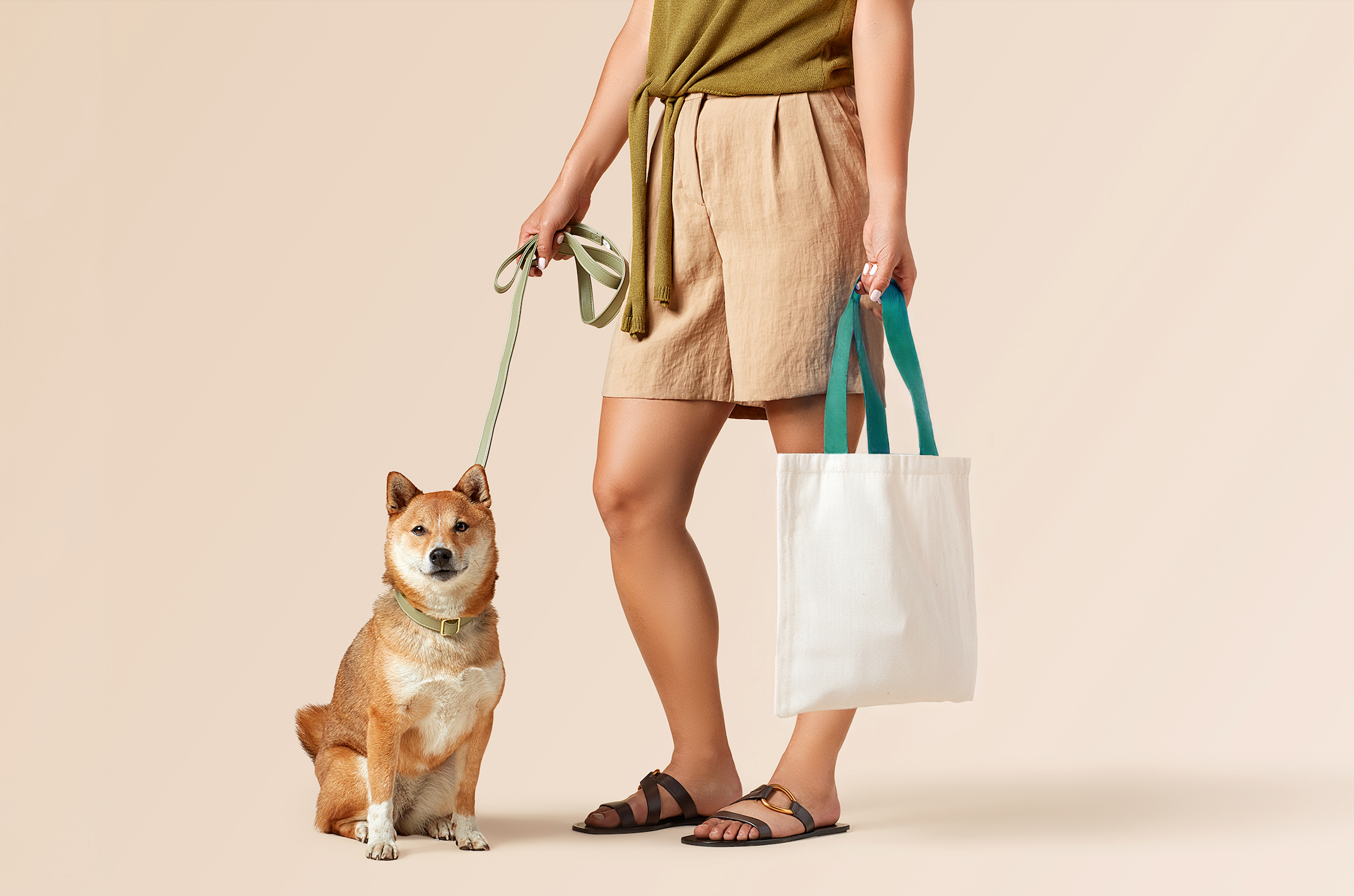Figuring out how much food to feed a puppy can be overwhelming and confusing. There’s a sea of advice on puppy care, and information overload can make it difficult to know where to start. But with a bit of help, your dog can get the best start in life with the right feeding plan to help them thrive.
Important Factors to Consider
If you’re wondering “how much to feed my puppy?” we’ve got you covered. Before we jump into the puppy feeding chart, there are two main factors to think about when deciding how much to feed: your puppy’s age and size. These two things will help you to pinpoint the exact amount.
Your Puppy’s Age
Your new best friend’s age will play a big role in figuring out how much to feed them. Because puppies experience such rapid growth, they need more food per pound of body weight than adult dogs. As your puppy continues to get older, their growth rate usually slows down, and their overall calorie needs go down.
In the early days, up to about eight weeks, puppies normally rely entirely on their mother’s milk. At 8 to 12 weeks, you can start to introduce puppy food as their needs continue to increase as they grow.
Your Puppy’s Size
Another important factor to consider is your puppy’s size. Larger breeds, like Great Danes, have a slower metabolic rate than smaller breeds, like Chihuahuas. This means that they burn more calories at a slower pace. A Great Dane puppy wouldn’t need as much food per pound of body weight as a Chihuahua puppy.
Large and giant breeds may need fewer meals overall, but portions will likely be larger. Small and toy breeds usually need smaller but more frequent meals (3-4 times a day) as they have smaller stomachs and faster digestion. Medium breeds fall somewhere in the middle.
Knowing how much to feed a puppy by weight can help you piece together the perfect meal plan for your puppy, alongside any advice your vet may give you during an initial check-up. These are just general guidelines to give you an idea of how your puppy’s size influences the perfect feeding plan to prevent issues like malnutrition, weight gain, and obesity.
Dry vs. Wet Puppy Food
Like human babies, your puppy is growing fast and needs a diet to support strong muscles, bones, and brain development. They need a diet full of essential nutrients like protein, calcium, and healthy fats. Puppies tend to have boundless energy, and the right food provides the right nutrients to fuel playtime, walks, and adventures.
Both dry and wet can be winning choices for your growing furball. Dry puppy kibble is a popular choice, but you may also want to consider wet dog food.
The main thing to look at is that both wet and dry dog food formulas are complete and balanced meals, meaning they contain everything your puppy needs to grow strong, healthy, and happy. You can feed your puppy dry or wet food or a combination. If you opt for feeding both, just make sure not to overdo it. Your puppy’s food should meet their daily calorie needs, whether from dry, wet, or combination feeding.
Because puppies can grow at different rates and their bodies can change quickly, it’s important to monitor your pup. Keep track of their weight and energy levels to make sure they’re getting everything they need from their diet. This will help prevent overfeeding or underfeeding.
Ultimately, the best choice depends on your puppy’s preference and lifestyle. You might have a picky eater who will only eat wet food, or your pup may go wild for kibble. No matter which type of food you choose, look for something with a complete and balanced formula specially designed for growing puppies.
How Often Should I Feed My Puppy?
So, how often should puppies eat?
Feeding frequency will depend on your puppy’s age, size, and activity level. Here’s a general guideline of how often to feed your puppy.
Toy Breeds:
- 6 Weeks to 4 Months: 4-5 meals per day
- Around 4 Months: 3-4 meals per day
- 6 Months to Adult: 2-3 meals per day
Small & Medium Breeds:
- 6 Weeks to 4 Months: 3 meals per day
- Around 4 Months: 2 meals per day
- 6 Months to Adult: 2 meals per day
Large & Giant Breeds:
- 6 Weeks to 4 Months: 3 meals per day
- Around 4 Months: 2-3 meals per day
- 6 Months to Adult: 2-3 meals per day
Like adult dogs, puppies thrive on routine, including mealtimes. Try to stick to consistent times to help them regulate their digestive systems and hunger. Avoid leaving food out all day, as it can encourage grazing, which can make puppies less interested at mealtimes and potentially lead to picky eating habits.
How Much Food Does My Puppy Need?
So, how much should I feed my puppy?
Here’s a general guideline to get you started:
Up to 5 lbs
- 1.5-3 months ⅓ - 1 ¼
- 3-6 months ⅓ - 1 cup
- 6-9 months ¼ - 1 cup
- 9-12 months ¼ - ¾
6-10 lbs
- 1.5-3 months 1 ¼ - 2 ¼
- 3-6 months 1 ¼ - 2 cups
- 6-9 months 1 - 1 1/2 cups
- 9-12 months ¾ - 1 ¼
11-20 lbs
- 1.5-3 months 2 ¼ - 3 ⅔
- 3-6 months 2 - 3 ¼
- 6-9 months 1 ½ - 2 ¾
- 9-12 months 1 ¼ - 2 ¼
21-30 lbs
- 1.5-3 months 3 ⅔ - 5
- 3-6 months 3 ¼ - 4 ¼
- 6-9 months 2 ¾ - 3 ⅔
- 9-12 months 2 ¼ - 3
31-40 lbs
- 1.5-3 months 5-6
- 3-6 months 4 ¼ - 5 ⅓
- 6-9 months 3 ⅔ - 4 ½
- 9-12 months 3 - 3 3/4
41-60 lbs
- 3-6 months 5 ⅓ - 7 ¼
- 6-9 months 4 ½ - 6 ¼
- 9-12 months 3 ¾ - 5 ¼
These are the feeding guidelines for our Cage-Free Chicken Puppy Food, which is made with organic cage-free chicken as the #1 ingredient to support bones and muscles.
Your puppy’s age, breed, weight, and activity level all influence how much to feed your puppy. The type of puppy food will also play a big role in the right amount. A good starting point is to check puppy food labels, as each brand will provide feeding recommendations based on age and weight. Your vet is a great resource and can usually provide you with a puppy food feeding chart and factor in specific recommendations for your puppy’s needs.
Make Adjustments As Needed
The above are general guidelines for how often and how much a puppy should eat. You will need to fine-tune the amounts to your puppy’s individual needs by monitoring your pup’s body condition and adjusting portion size accordingly.
Growth and weight charts will help you track your puppy’s progress and help them reach and maintain a healthy weight. If you find that they are overweight, reduce their food a little. If they’re underweight, you might need to add a bit more to their meals. Because every puppy is unique, it’s difficult to put an exact number on the amount of food your puppy needs, as the best amount can vary even within the same breeds.
By having a good starting point and reading up on the basics, you can have the information you need to get started. Then, adjust your pup’s diet based on their individual needs so they can grow healthy and avoid weight-related issues.
When Do You Start Feeding Adult Dog Food?
The transition from feeding puppy food to adult dog food will depend on your puppy’s size, breed, growth rate and weight, activity levels, and overall health. When your puppy has reached full adult height and weight, it’s usually time to start switching them to adult dog food or all life stages dog food. This transition should be gradual over 7-10 days to avoid tummy troubles. Continue to keep an eye on your pup’s body condition and weight.
Here’s when most puppies reach their adult size and can usually start eating adult dog food:
- Toy Breeds: Around 6 to 9 months old.
- Small Breeds: Around 9-10 months old.
- Medium Breeds: About 12-14 months old.
- Large Breeds: About 12-14 months old.
- Giant Breeds: Around 18-24 months old.
Is It Worth It To Buy Premium Puppy Food?
Premium dog food typically contains high-quality ingredients, meaning they’re more concentrated with nutrients, high-quality protein sources, and essential vitamins and minerals. So, you can feed your pup less but achieve the same nutritional needs as standard dog food brands. Often, premium brands use high-quality protein sources like chicken, salmon, or beef, which can naturally be more appealing for dogs.
Bargain brands often use ingredients like corn, wheat, and soy as fillers. These are inexpensive sources of calories that don’t offer much in terms of essential nutrients like protein, vitamins, and minerals. While these ingredients can fill your dog up, they don’t provide the complete nutrition your pup needs, potentially leading to nutritional deficiencies.
Premium dog food often uses whole food sources like real meat and whole grains, promoting better digestion and absorption for a shiny coat and happy gut. These are just a few reasons to choose Jinx dog food. We know your bestie deserves the best. Whether exploring the great outdoors or conquering the backyard, fuel your pup’s adventurous spirit with all the essential nutrients your puppy needs.

